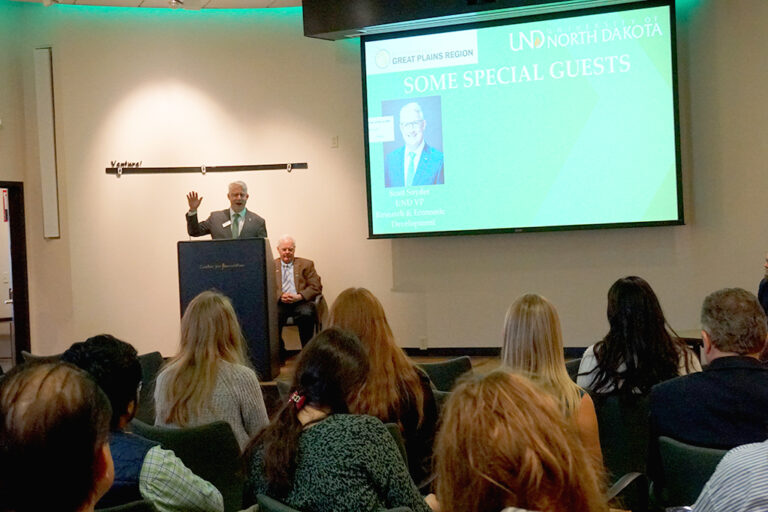Tradition of leadership
UND’s Nurse Anesthesia program celebrates 30 years of excellence in supplying the healthcare workforce needs of the region

North Dakota and regional hospitals large and small depend on UND nurse anesthesia graduates.
UND’s Nurse Anesthesia program is the only one in the state, and it prepares registered nurses to be Certified Registered Nurse Anesthetists (CRNAs), who administer all methods of anesthesia to all types of patients, including labor epidurals, monitored anesthesia care, and surgical anesthesia. CRNAs work collaboratively with physician anesthesiologists or independently as sole anesthesia providers.
The program, which began in 1986, admitted its first cohort in 1987, and is celebrating its 30th anniversary. It prepares registered nurses to become nurse anesthetists, with a special focus to serve small rural hospitals.
“We try to meet the needs of both the urban and rural parts of the state,” said Kevin Buettner, Program Director for the Nurse Anesthesia program. “Every student does a rural clinical experience in addition to multiple other experiences.” In some states, nurse anesthetists are the sole providers in rural hospitals. Access to anesthesia care is vital to rural hospitals and surrounding communities.
Students who enroll in the 28-month program spend the first 11 months on campus, and the rest of the time at hospitals and other clinical agencies, logging at least 2,000 hours of clinical experience.
The program is competitive: about 60 to 70 registered nurses apply each year for 12 seats, with a total of 24 students in the 28-month program. The small class sizes ensure individual attention. Since 2000, the graduation rate is 98.5 percent, and nearly all students have a job before they graduate. While most practice in North Dakota and Minnesota, graduates of the program can be found across the United States.
Becoming a nurse anesthetist is both uniquely challenging and rewarding, said Buettner. “However, the opportunities and professional growth are unparalleled.”
Art and science
“Nurse anesthesia is my dream career,” said Danielle Kiedrowski, a second-year student. “It’s art and science, brought together into one practice. You apply the science of anesthesia to the art of nursing.”
Kiedrowski worked as a registered nurse at Sanford Health in Fargo for five years before entering the program. As part of the medical surgical resource team for a year and-a-half, she “floated” between 10 units, and especially enjoyed cardiac care. Then she spent three and-a-half years in the cardiac ICU before entering the nurse anesthesia program.
“I really love the clinical experience and the knowledge preceptors share,” said Kiedrowski. “The program is amazing. The faculty incorporate their experience into the classroom.”
Active practitioners
The faculty are graduates of the program, active in leadership, and maintain a clinical anesthesia practice in the community.
That keeps the program connected to the practice – and the community.
“We teach students not to just work in the operating room, but to be involved in the profession and to be leaders,” said Buettner. “We feel drawn to be mentors, and have all served our profession at the state and national levels. We show leadership by example.”
Faculty say that maintaining their own clinical anesthesia practice in the community helps to keep their nurse anesthesia skills well-honed and up-to-date.
“Every patient is different,” said Amber Johnson, Assistant Program Director. “There is an art and a science to anesthesia and in learning to anticipate how patients will respond.”
That’s why she continues her clinical practice and teaches. “I’m with patients, doing what I love,” said Johnson. “The most effective way to make a difference is through students. I enjoy watching them learn and grow into competent, safe practitioners.”
“We prepare students to practice in any arena, from small rural hospitals to larger tertiary hospitals,” said Jamie Sperle, faculty member. “In a rural state such as North Dakota, it’s vital that students have the knowledge and ability to practice independently in order to provide their patients with safe and efficient access to various anesthesia services in rural communities with under-served populations.”
“New technologies, medications, textbooks, and real life practice offer a complete circle of education,” said Sperle. “This is a completely different, real-life approach that’s difficult to replicate anywhere else.”


